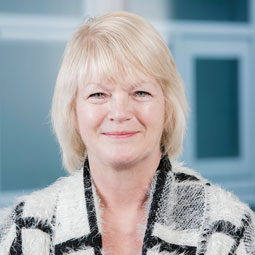Putting funding and pandemic issues to one side, the technology challenges that the NHS face are incomparable to any other organisation.
Britain’s publicly funded health service produces more data than the FTSE 100 companies combined. The average hospital houses around 140 data-producing systems and yet few of them talk to each other.
NHS data on the dark web is worth six to ten times more than breached data in any other sector and is worth way more than credit card details because the data can be used to create fake IDs to buy medical equipment or drugs.
And yet tech can alleviate some of these issues and boost efficiencies. It’s been calculated that messages sent to millions of patients via the NHS app have saved the organisation over £1billlion last year. The advent of digital streaming and AI meanwhile, are helping in areas such as remote health diagnostics and monitoring.
For businesses codesigning connected healthcare products with the NHS there is also the opportunity to monetise by scaling globally, with the market projected to be worth £700bn ($1 trillion) by 2032.
However, three health tech experts speaking at Connected Britain last month told delegates gathered for its healthcare session that while there was huge potential for knowledge transfer between the private and public sectors, there were still cultural, procurement and structural challenges to address.
“We’re lagging behind other nations”: Sheena Asthana, healthtech director, Plymouth University

Sheena Asthana
Sheena Asthana has conducted extensive research in digital health, with emphasis on the barriers and enablers to embedding innovation in the NHS.
According to Asthana the level of tech maturity in the UK’s public health system is lagging behind other territories, including the US, Australia and Southeast Asian countries.
“There are a number of reasons for this and if you’re coming from the tech industry it can take a while to get to grips with the vagaries of the NHS,” she explained.
While a software developer may view the NHS as one entry point, the reality is hugely fragmented with thousands of GP surgeries, hundreds of hospitals and a tapestry of social care systems – with those who are innovating doing so in different ways on different platforms.
“We used to call this type of innovation ‘Let 1,000 flowers bloom’ but the reality is often more like a messy meadow,” said Asthana. “There are a lot of weeds there and we don’t know which ones are working and which ones are not. Also, nothing is really being scaled up and everything is very short term.”
The healthtech academic also points out that there’s also a cultural resistance to all things digital – with staff often associating it with the digitisation of patient records (which was a long and painful transition for many) or simply consigning it to IT and computers.
Anatomy of a heathcare attack: read more here
“They don’t think about wearables or robotics or ways in which tasks can be reduced. And because of all the stresses in the system, people just don’t seem to have the bandwidth to think out of the box,” she added.
Asthana also noted that innovation is challenging in sectors that need to be heavily regulated.
“It’s a confusing field if you are developing AI. If it is going to influence clinical decision making it needs to go through MHRA approval as a medical device and it’s still not always clear how vendors do that still,” she added.
While Asthana noted that codesigning systems with the NHS was a “complex legal and regulatory journey” she added that it’s one the industry must start exploring – with the potential for market growth and the ability to positively impact patients’ lives acting as the main drivers.
“There’s potentially masses we could be doing in peoples’ homes from monitoring a person’s gate to diagnosing cognitive decline and risk of falls – even in areas such as checking in on loneliness, which can have big health implications – we can start to intervene earlier.”
“Telecare in Scotland needs to change”: Glenda Cook, planning manager, Glasgow City Health & Social Care Partnership

Glenda Cook
From a social care perspective, Cook told Connected Britain that there was a demographic imperative for change.
“In Scotland one in thirteen of the adult population is employed in social care workforce and we have the greatest rate of over 65s working in our sector. Soon we are going to run out of people to populate the care model,” Cook warned.
“The system is broken and still does not meet current demand, but we believe that technology can be harnessed to make that difference and shift that resource – but there are challenges,” she recognised
In care one of the key issues revolves around updating Scotland’s dated telecare programme, Cook explained. Examples of new technology in this area include ambient sensors, GPS trackers and video technology. Although these products work in isolation, they do not currently combine with the main telecare platform used in Glasgow.
“The Telecare system is Glasgow is over 30 years old and still looks the same,” Cook explains
“It was expected that the digitisation would be a catalyst to drive innovation and change but the reality is that we have ended up replacing like for like at greater cost and with less resilience- so that’s a challenge for us. Even the tech we do use to date has not been successful,” she claimed.
Connectivity, Cooked added, was key, but a lack of it in the right areas is currently one of the main barriers.
“We can’t have the tech without connectivity. We have good digital coverage in Glasgow, but it stops at our service users’ doors. It stops where we need it.
“But the potential is huge if we can address the infrastructure and cultural challenges, we can then reap business benefits. But investment is required. Because right now technology is considered niche concept in social care – even in Glasgow – and we need to get it moved to where it should be in a mainstream and transformational role.”
“I’ve worked in the NHS – now I want to co-create, innovate and make an impact”: Sultan Mahmud, director of healthcare, BT Business

Sultan Mahmud
Sultan Mahmud has 25 years of experience working for the NHS in various roles, across primary and secondary services, innovating from within, and he now wants to bring BT’s expertise to transform the sector.
“I’ve lived the pain. In terms of where BT is we are a large force in the UK and our view is that there’s no other sector on this planet that is as ripe for transformation as healthcare,” he said.
One reason for this is the burgeoning health requirements of UK’s older populations: “The number of 65-year-olds with mobility issues will double, the number of 85-year-olds will treble. This puts inextricable demand on the NHS, on the back of a tough pandemic…the NHS is in trouble,” said Mahmud.
Enterprises like BT and the SME community, he added, have a role to play in supporting transformation, because there is potential to innovate, especially in terms of efficiency savings.
“The NHS app saved us about a billion pounds last year. And this app still has a long way to go – it’s not been designed for users and we’re looking at ways we can improve it.
“Then you think about the hospital space. Hospitals have largest fix cost space. For instance, every time some visits A&E that costs £400 and for a non-elective stay that’s between £6-£10K. So, we’re looking at how hospitals can more efficiently bill commissioners.”
As well as providing the technology, Mahmud firmly believes that the onus is also on industry to lead the way and support NHS staff in devising long-term tech strategies.
“If you think about the wider care system and community space. How many have a mobile or digital strategy? An infrastructure strategy? The onus is on us to show them the way.
“How secure do you think the NHS data is? It’s shocking. Look at the cyber attacks and London hospitals…that’s on us to lead the way and that’s why I moved from NHS, I felt I could make more of an impact.”
Mahmud gives an example of how BT recently used its corporate might to support digital transformation in radiology departments of hospitals in the Southeast.
Here, the business arm of the UK telco partnered with a medical AI vendor, a diagnostic firm and a messaging service to create a remote diagnostic platform for radiology which, Mahmud claimed, is currently reporting a 99.9 % accuracy rate.
“Our approach must be one of ‘Stand up and support’ – more companies in the SME and B2B sector need to collaborate, cooperate and coproduce.
Mahmud acknowledged that the mechanisms for engagement are sometimes hindered by “classical procurement rules.”
He added: “We are currently trying to break down some of these barriers and the NHS is responding.
“There are so many opportunities that we can all help with: my request is please don’t give up, there is a lot we can do but we have got to work out how we interlock.”